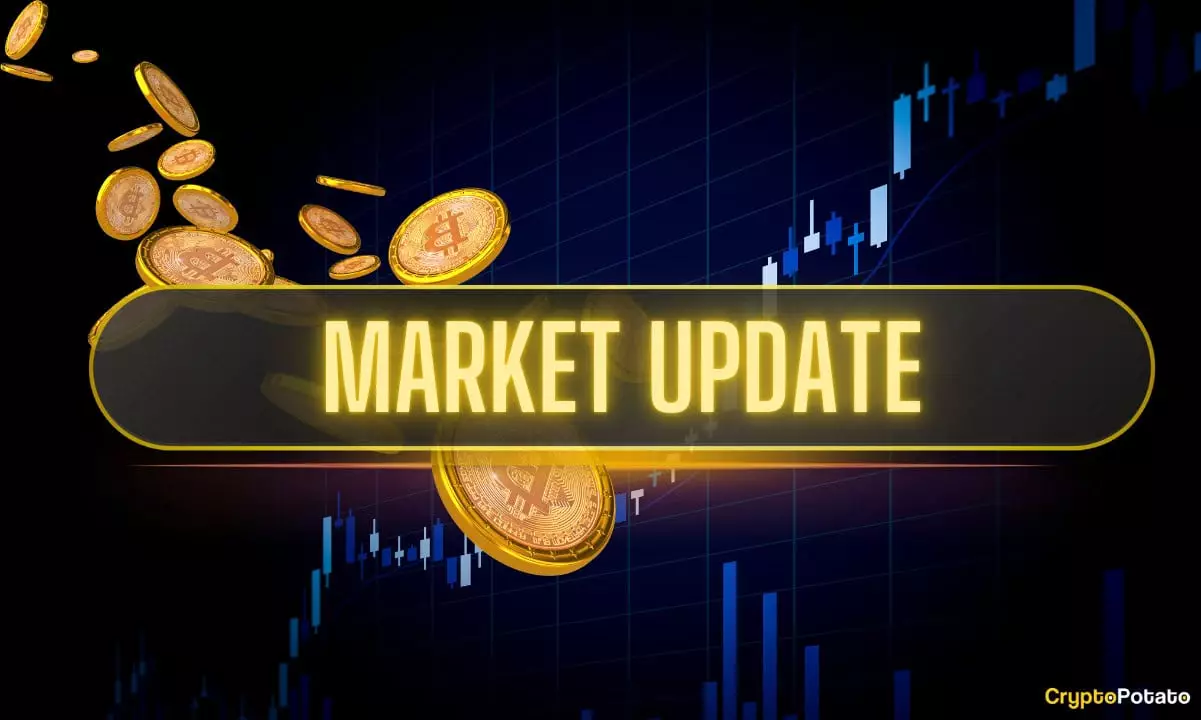Despite Bitcoin’s seemingly flat weekly performance hovering around the $107,000 mark, the past week has been anything but placid. The broader narrative paints a market riddled with spikes of intense volatility, heavily influenced by geopolitical tensions and cascading reactions from institutional players. Yet, the entrenched narrative portraying Bitcoin as a steady asset class is increasingly misleading. Beneath the surface, the cryptocurrency market seethed with angst and uncertainty—an uncomfortable reminder that Bitcoin’s “dominance” is less about calm and more about resilience amid turmoil. The reality is stark: Bitcoin’s ability to “absorb” shocks masks the deeper fragility inherent in an ecosystem still vulnerable to external shocks and speculative liquidations.
Geopolitical Turmoil: The Unseen Market Catalyst
The recent flare-up between Iran and Israel injected a shockwave into both crypto and legacy markets, and it was anything but a backdrop event. BTC’s dip below $100,000 was triggered by the chilling prospect of full-blown war after the U.S. military’s alleged strike on Iranian nuclear sites—a geopolitical escalation many analysts argue injected a dangerous unpredictability into markets. The subsequent rapid de-escalation following a symbolic Iranian counterstrike and a ceasefire announcement by then-President Trump should not obscure the fact that such volatility underscores crypto’s acute sensitivity to political drama. This is a sobering lesson for investors enamored with crypto’s narrative of independence from traditional finance; geopolitical risk is no less real in digital asset markets.
Bitcoin’s ‘Unshakable Dominance’: A Double-Edged Sword
Bitcoin’s ability to withstand headwinds while altcoins bore the brunt of losses—many plunging between 4% and 10%—is often hailed as proof of its robustness. But this narrow focus on BTC dominance is a flawed metric that ignores what such concentration actually signifies: a risk-averse market unwilling to embrace innovation or diversify holdings. Far from an uncontroversial sign of strength, Bitcoin’s dominance could be symptomatic of a maturation stall, as newer projects fail to inspire confidence in the face of regulatory uncertainties and legal battles—take Ripple’s ongoing conflict with the SEC as a prime example. This underlines a broader systemic dilemma: crypto’s innovation pipeline is throttled by legal and geopolitical bottlenecks, forcing capital back into what is perceived as “safe” Bitcoin, ironically dampening overall ecosystem growth.
Institutional Influence: The Proverbial Elephant in the Room
Institutional involvement is increasingly blamed for crypto’s heightened correlation with legacy markets—but this speaks to a deeper issue. Rather than indicating market maturation, institutional dominance risks transforming the nascent crypto sector into another extension of conventional finance, replete with the same pitfalls of herd mentality and systemic risk. The recent sale of approximately 720,000 BTC by primarily newer holders, which the market astonishingly absorbed without a precipitous crash, typifies this phenomenon. It shows a market increasingly driven by liquidity and volume rather than genuine valuation, vulnerable to concentrated moves by large players. This dynamic raises questions about how decentralized and democratic today’s crypto markets truly are—a critical concern for those valuing crypto’s original ethos.
Mastercard and Chainlink: Adoption or Consolidation of Power?
The news of Chainlink partnering with Mastercard to enable 3 billion cardholders to buy crypto is often heralded as a landmark for mainstream adoption. But one must approach such developments with measured skepticism. While bridging traditional finance and crypto is undeniably positive, it also represents a consolidation of gatekeeping power within well-established mega-entities. The concern is that this “adoption” may prioritize convenience for consumers at the expense of decentralization and user sovereignty. The very infrastructure that promises seamless access simultaneously nudges crypto further into the realm of regulated, centralized financial ecosystems. The nuance here is critical: is this progress or a co-option of crypto’s revolutionary promise?
The Lingering Shadow of Regulatory Battles
Ripple’s ongoing legal wrangling with the U.S. SEC remains a stark reminder of regulatory drags stifling crypto’s progress. The judge’s refusal to expedite the case prolongs a cloud of uncertainty not just over XRP but the legal landscape governing digital assets broadly. The drawn-out trial discourages investment and innovation within the sector, creating an atmosphere hostile to risk-taking and creative development. For a market predicated on disruption, regulatory whimsy feels like a backdoor tether, shackling potential with bureaucratic inertia. Crypto’s future hinges on clarifying regulatory frameworks, but current delays impose a high cost on innovation and investor confidence alike.
What the On-Chain Data Reveals about Market Sentiment
One relatively optimistic beacon amidst the chaos is the rising Long-Term Holder (LTH) to Short-Term Holder (STH) ratio in Bitcoin. Historically, this metric has preceded significant bull runs—from $28,000 to $60,000 and again from $60,000 to $100,000. However, while history offers lessons, it doesn’t ensure repetition. This time, the broader environment is laden with greater global risks and institutional entanglements that could bend rather than break past patterns. These on-chain signals invite cautious optimism, but the prudent investor should remain vigilant, understanding that external shocks and regulatory entanglements may yet upend anticipated trajectories.
—
The crypto landscape today cannot be romanticized as a self-contained or impervious market. It is an intricate web of geopolitical risks, institutional pressures, and regulatory uncertainties that castigates hype with volatility and punishes overconfidence with setbacks. Bitcoin’s resilience amid turmoil is impressive but not infallible, and the ecosystem’s future hinges on navigating a complex dance between innovation and control—a dance that is not for the faint-hearted or the easily swayed.


Leave a Reply